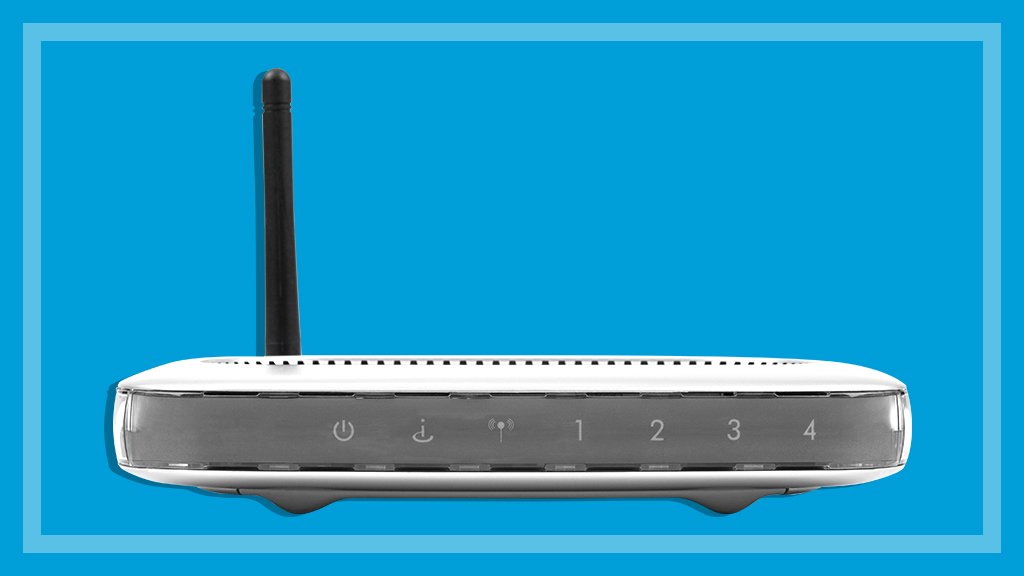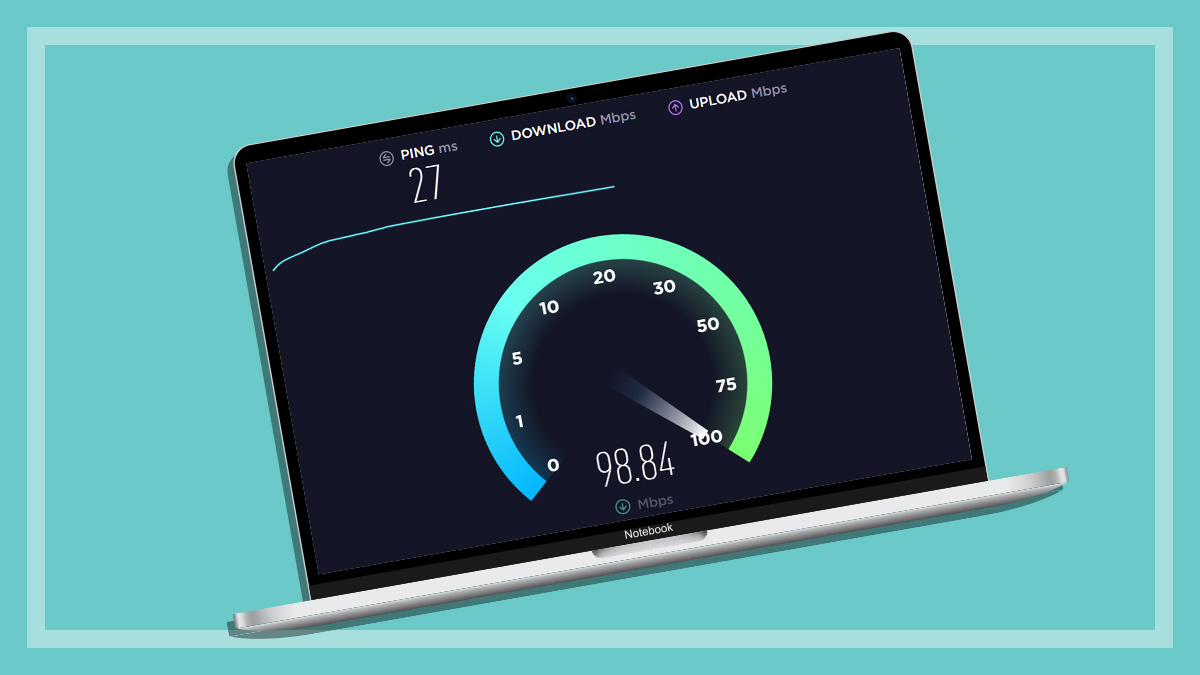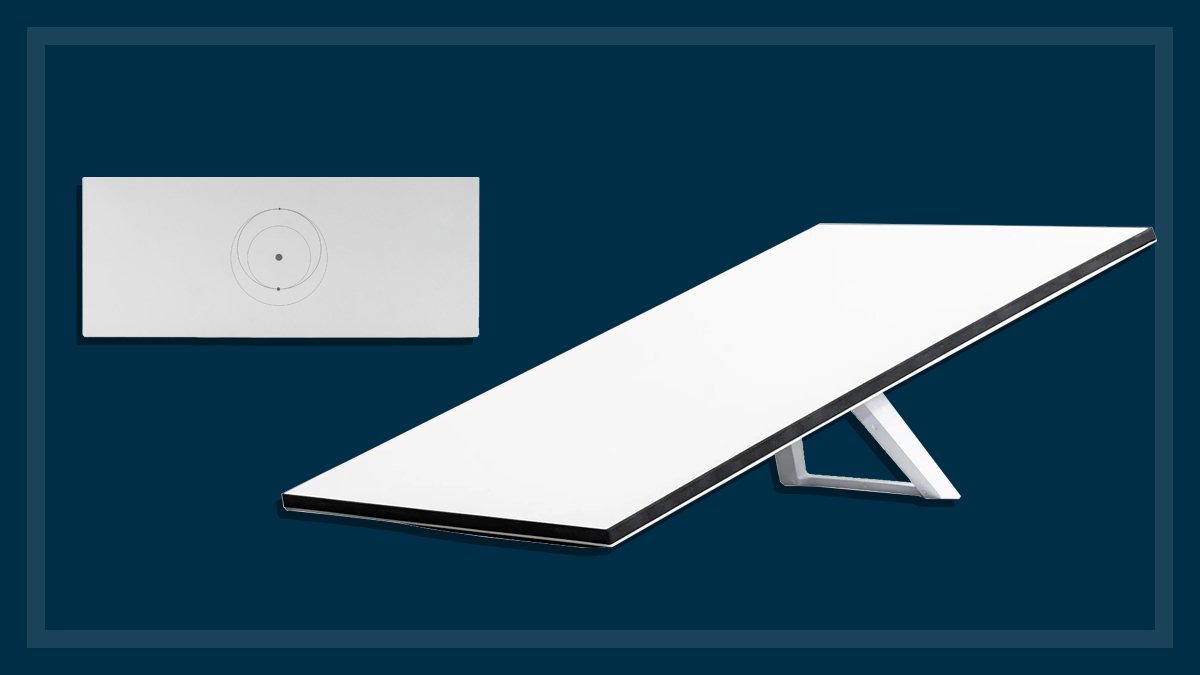Get our independent lab tests, expert reviews and honest advice.
How to find the best wireless router, Wi-Fi mesh or wireless extender

A home network brings together all the various devices that we use every day, from computers, phones and tablets to games consoles, smart TVs, wireless speakers and more. Whether they connect to the internet or just to one another, they need to join the network.
On this page:
- What’s the difference between a modem and a router?
- Types of Wi-Fi
- How to improve home Wi-Fi strength and speeds
- What is a wireless range extender?
- What is a wireless mesh network?
- What is a powerline adaptor?
- What is a USB Wi-Fi adapter?
- What is a wired hub?
- Can my computer connect to 4G?
- How does mobile broadband work?
- What is a cellular modem?
- Useful features for home networking
- Setting up your network: first steps
There’s more than one way to get your devices talking to one another, using wired connections (Ethernet) or wireless (Wi-Fi and Bluetooth), or any combination. But what equipment are you likely to need for your particular situation? Here’s a handy reference guide to the types of various home network equipment you might need, and how you can use it to boost performance.
What’s the difference between a modem and a router?
These are the tools you need to get online. Without them, your home Wi-Fi is more or less useless.
- Modem: The most basic piece of the home network puzzle, a modem connects you to the internet. It can connect physically to a computer or to other devices, usually via a hub or switch, or a separate wireless router. Sometimes called a gateway, as it connects two networks (your internal home network to the internet network).
- Modem-router: Most commonly, the modem provided by your ISP will be a modem-router, with a wireless router built in. This creates a local wireless network to which you can attach your wireless network capable devices, becoming a central hub for them all to connect. It will also usually include several LAN (local area network) ports for connecting Ethernet cables.
- Wireless router: A wireless router can be bought separately and attached to your modem or existing modem-router to create a wireless network. A third-party wireless router may offer greater speed and features not found in your ISP-supplied devices, and improved performance in busy households. It can be added on to supplement or replace your ISP-supplied wireless router.
Sometimes, a third-party wireless router can be the solution to sluggish speeds delivered by your ISPs modem router. But it’s not necessarily the modem component that needs replacing, it’s more likely that the built-in wireless router is the bottleneck for your local network. You can add a faster wireless router to your existing modem-router to boost the speed of your local Wi-Fi network by plugging it into a spare ethernet (LAN) port on the back or the modem-router. You can then go into the settings and turn off the wireless router component, leaving your newly plugged-in wireless router to look after your home networking.
Do all wireless routers include a modem?
No, and not all modems include a wireless router. A router is not a modem (which connects to the internet via ADSL or NBN). Usually, your internet service provider (ISP) will supply a modem that also includes a wireless router and which is set up for your ISP’s network. A combined modem and wireless router combination is usually called a modem-router, rather than just a wireless router (or router for short).
Can a new modem-router can replace your ISP-supplied modem?
Yes, but check with your ISP first to see if the modem-router is one that they support, otherwise you could end up doing the configuring and troubleshooting yourself, and that’s a job for advanced users only.
Can I add a third-party wireless router?
Yes. Your ISP-supplied modem may or may not have a built-in wireless router, but it will usually have a spare ethernet port so you can plug in an external model. This external wireless router (such as the ones in our test) can be used instead of, or in addition to, the built-in wireless router. So if you have an older ISP-supplied modem/router you can still greatly increase your local network speed by adding on a latest model wireless router. You can usually turn off the built-in wireless router in the device’s settings.
Can my router affect Wi-Fi performance?
If your local Wi-Fi network performance is suffering, it’s usually your router that’s the problem. You can upgrade your Wi-Fi performance by adding a new router to your existing modem (or modem-router). Wireless routers create and connect to local wireless networks. You still need your modem to connect to the internet.
Types of Wi-Fi
Wi-Fi 6 is the new name for the new standard for wireless networking (Wi-Fi), also known as 802.11ax. This is gradually replacing the older standard called Wi-Fi 5 (802.11ac).
Among the benefits of Wi-Fi 6 is faster speed, lower latency, stronger security and support for more devices. The average Australian home has multiple wireless devices using streaming audio and video, online gaming, plus a growing range of always cloud-connected IoT (internet of things) devices such as home appliances and security gadgets.
The benefits of Wi-Fi 6 routers will be come more obvious as your home eventually becomes populated with more Wi-Fi 6 client devices. You’ll be able to transfer data at a quicker rate, and to more devices at the same time.
Dual-band or Tri-band
Wi-Fi routers (including those built into ISP-supplied modem-routers) are usually dual-band routers operating on two wireless bands – 2.4GHz and 5GHz. You’ll also find some brands also market tri-band routers, which add an extra 5GHz band to help support a higher number of connected devices such as smartphones, tablets, computers and TVs.
Network-connected household appliances and IoT (internet of things) devices such as smart bulbs, typically use the 2.4GHz band. Computers, smartphones, tablets and home entertainment equipment that’s more than a few years old will use it too. However, modern devices can connect to 2.4GHz or 5GHz, and you can switch between them whenever you want.
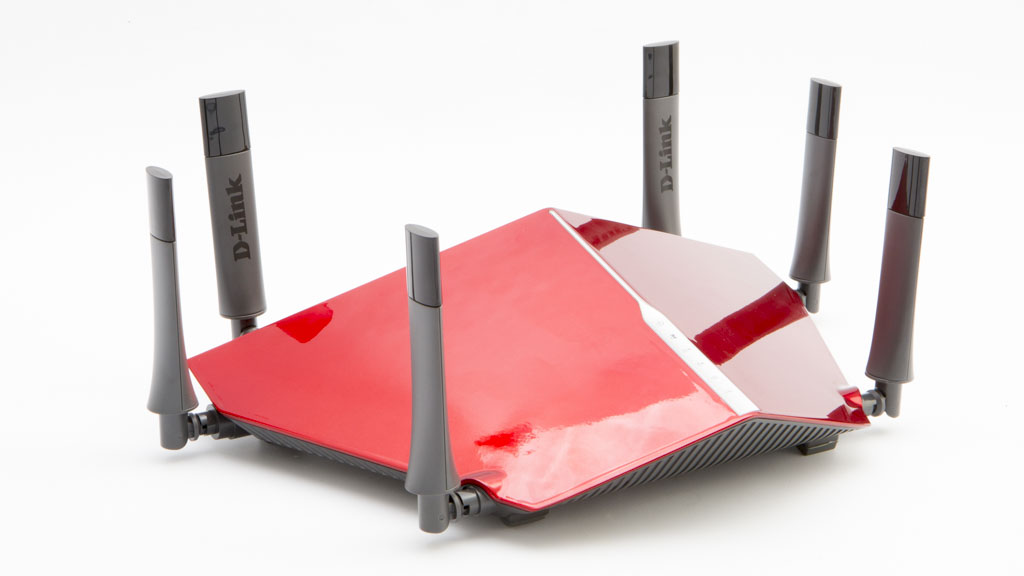
This is where dual or tri-band is useful. Each band can get crowded if a number of devices are connected, which clogs the network and slows things down. Moving devices onto another band can take some of the load off, because the bands don’t interfere with each other, and less congestion equals more speed across the board.
Tri-band routers give you the highest overall throughput to help cope with having multiple Wi-Fi devices. They can stream to two or more devices over their two 5GHz bands, giving a higher total throughput. Tablets and laptops are a good example of devices hopping on the dual-band bandwagon, with their ability to use the faster 5GHz band, giving them an advantage for media streaming in the home.
Understanding Wi-Fi protocols
Understanding the basics of networking is simpler than it used to be, but it’s still an alphabet (and numerical) soup of standards and protocols. Once you get your head around the codes which are printed on the box, you can identify equipment running older, slower protocols so you don’t get ripped off.
- The newest wireless standard is called Wi-Fi 6 (802.11ax).
- This is faster and able to handle more devices than its predecessor, Wi-Fi 5 (802.11ac). Previous standards included 802.11n or g, b, or the lesser-used a.
- These vary in their speed, range, signal penetration and compatibility with modern devices.
- Usually, newer standards are backwards compatible with earlier ones, so for example you might see a router referred to as 802.11ac/b/g/n.
How to improve home Wi-Fi strength and speeds
There are four broad factors that contribute to the speed of your local wireless network:
- Modem/router quality and capabilities.
- The number of users/devices on the network.
- Proximity to the modem/router (which includes interference).
- The speed of your internet connection.
One and two can be covered by reducing the number of users or spreading them across two or three Wi-Fi bands as covered above.
Proximity and interference depends on a number of factors, including the type of house you live in (brick, for example, is harder for a signal to penetrate). Range can also be affected by bandwidth interference from other devices such as cordless phones or microwaves that commonly operate in the 2.4GHz band. Placing the wireless router as close to the middle of the home as possible will provide the best coverage.
However, you can maintain a strong signal far away from the router by adding on a mesh network, Wi-Fi range extender, powerline adaptor, or a USB Wi-Fi adapter.

What is a wireless range extender?
A wireless range extender is one way to bridge that extra distance. Even a top-of-the-line wireless router may not be up to the job of covering your whole home. A router only has a certain range (around 50m in line-of-sight) but obstructions such as walls and furniture can shorten that range or block it entirely, creating areas where there is no Wi-Fi signal called black spots.
Typically, a range extender is placed on the outskirts of the main network, where it picks up the Wi-Fi signal and retransmits it. A wireless extender can help you go around obstructions. Strategic placement of your wireless range extender can help you avoid network black spots and weak signal areas. Note, however, that the relayed signal will be slower than the original network.
Types of extenders
Not all wireless extenders work the same way, so have a look at which of the following suits your needs.
- Media bridge: These have multiple Ethernet ports and are designed primarily for connecting non-wireless home entertainment devices to the wireless network, to give them wireless capabilities. Look for one of these if you want to connect a lot of Ethernet devices to your wireless network and won’t be extending the network too far.
- Wall-plug adapter: These are handy if you only want to extend the network over a small-to-medium distance (e.g. apartment).
How wireless range extenders performed in our tests
While we no longer test Wi-Fi extenders, our results from 2017 will give you a sense of the best performers (based on speed at close range and speed at extended range in addition to how easy they are to use) as well as what price you can expect to pay.
| Brand and model | Price | CHOICE Expert Rating |
| Ubiquiti AmpliFi Afi-HD | $533 | 80% |
| Netgear Orbi (RBK50) | $589 | 78% |
| Netgear Nighthawk X4 EX7300 | $239 | 76% |
| Netgear Nighthawk EX7000 | $259 | 72% |
| ASUS RP-AC68U | $238 | 67% |
| ASUS EA-AC87 | $205 | 63% |
| ASUS RP-AC52 | $109 | 63% |
| D-Link DAP-1620 | $119 | 63% |
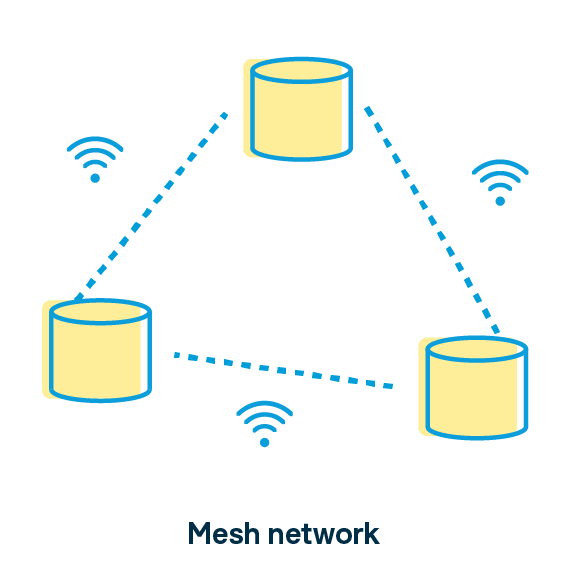
What is a wireless mesh network?
A mesh network is a more ‘intelligent’ type of Wi-Fi extender system that can increase the range of your wireless network, eliminate weak signal areas, and get around Wi-Fi black spots. In a mesh network typically each extender (or node) talks to not only the main router but to the other nodes.
A mesh network is designed to give you one set-and-forget network and automatically switch you to the device nearest you with the strongest signal, so no matter where you are in your home you stay within signal reach on the same network. All the end user sees is connection to one network, without having to worry about which node to connect to.
Not only does this give you a seamless networking experience no matter where you are in the home, the mesh network can grow with the addition of more nodes.
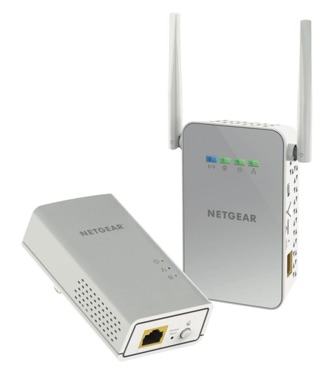
What is a powerline adaptor?
Powerline adapters are also called Ethernet over Power (EoP) adapters. These are paired devices that plug into a wall mains power socket to send data between two points over your existing home electrical wiring. They can plug the gaps where Wi-Fi doesn’t reach.
They typically obscure one or two power points, but may come with a pass-through socket so you can still plug in an electrical appliance. They should be plugged directly into the wall (not a power board) and both devices need to be on the same household wiring circuit.
You might find that if you plug one adapter into a lounge room outlet and the other adapter into a kitchen outlet, they might not be able to connect because the outlets are on different circuits. This will vary, however, with the way your house is wired for electricity. Though not generally as popular as wireless extenders, powerline adapters can be an effective alternative in some circumstances.
Note that EoP should not be confused with Power over Ethernet (PoE), which is a different technology that provides power using standard ethernet cabling. PoE can be useful for powering security cameras and other small devices without needing to also run an electrical power cable to a wall socket.
What is a USB Wi-Fi adapter?
For adding older equipment to your wireless network. Use it with a laptop, for example, to upgrade from the laptop’s older wireless connection such as Wireless-n (802.11n) to a faster modern standard such as Wi-Fi 5 or even Wi-Fi 6. They can plug in directly or via a cable.
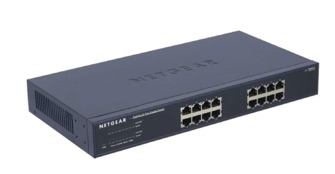
What is a wired hub?
A wired hub or switch connects various wired Ethernet devices. Usually, a modem or wireless router will have a small hub with several ports built-in, but a separate hub/switch unit can be added to support many more devices.
A switch is a ‘smarter’ form of hub that routes traffic directly to specific devices for improved efficiency and throughput. Wired connections to your devices via Ethernet cabling will generally give you a faster and more reliable connection than Wi-Fi, but require that you can run Ethernet cabling through your home to the devices as needed.
Can my computer connect to 4G?
Though you can’t connect most computers and laptops to a mobile network, you can buy equipment that lets you use broadcast mobile data (3/4/5G) over Wi-Fi and Ethernet.
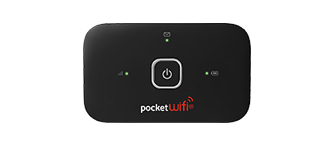
How does mobile broadband work?
Mobile broadband lets a PC or a router gain receive internet access via a cellular network. The devices come in various shapes and sizes, but usually small enough to easily fit in a pocket, and include 3G and 4G LTE and even 5G capability for connecting to the internet, just like a smartphone. They then create their own personal Wi-Fi network, to which you can connect smartphones, tablets, laptops or other devices with Wi-Fi capability.
Usually they will support multiple devices connected at once, though this will affect the speed of each device as it’s a shared link to the internet via cellular connection. They range from thumb-sized devices that plug in directly via USB, to separate devices connected by a short USB cable
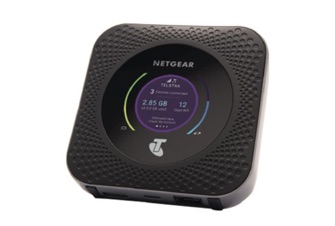
What is a cellular modem?
This connects to mains power like a standard modem/router, but connects to the internet over 4G LTE or 5G rather than ADSL or the NBN. It is commonly used to provide a backup connection that takes over automatically if your main broadband connection fails. If you can’t afford to be without an internet connection at home, a cellular modem set up to be used as an emergency backup connection can give you the peace of mind you need.
Useful features for home networking
Home network equipment typically includes a bunch of extra features. Though not necessary, these tools can be quite useful depending on your networking needs.
Concurrent/simultaneous dual band
This offers greater overall throughput by utilising both the 2.4GHz and 5GHz bands at the same time, rather than having to choose one or the other as separate networks (known as selective dual band). Simultaneous dual band is an advantage, but not all routers do it.
Gigabit ethernet ports
These are needed to connect to the NBN. A gigabit (1000Mbps) connection for a wired network, via ethernet cable, uses a gigabit ethernet port.
LAN ports
Provide extra local area network (LAN) ports to connect other devices via wired ethernet. This can take a load off your wireless connection.
Quality of Service (QoS)
This can help you nominate what types of network traffic are important and therefore get priority – streaming media, for example.
Security preset
Uses security encryption to prevent the network accidentally being left open and thus vulnerable to unauthorised users. Wireless routers normally offer one of several security standards, including WEP, WPA, WPA2 and WPA3. WEP is the least secure of the three and WPA2 the most common, though the latest WPA3 is reputed to be much more secure. WPA3 is now common on new routers.
Speed
This may be the same or different on each band – for example 300Mbps on each band or 300Mbps on one band and 450Mbps on the other, or even 450Mbps on each.
USB ports
Let you connect other devices to the router, such as a printer or external hard drive. This puts them on the network to share with all users. Note that a USB port may be specific for a printer or an external drive, and not necessarily either. Check the specifications for your router model.
Setting up your network: first steps
Now that you know what kind of equipment you need, these steps should help you keep your network organised as you get it off the ground.
The first step after plugging it all together (assuming you have a separate modem and router) is to identify the ‘WAN’ (wide area network) port on the router, which looks the same as the others but is intended only for your modem. It’s usually labelled and colour-coded differently too so it’s easy to pick out. The other ports are for your wired devices which can generally be attached in any order.
Think about what equipment you want to attach to the network, and where it will be:
- Which ones will use wireless? Which will be wired?
- Where in the house will they be and how much cable do you need?
- Grab a pencil and paper, and draw up a diagram of your network. That way, you can work out exactly what you need to connect it all.
- On that same piece of paper, put down any relevant user names or IDs and passwords.
Why we've partnered with WhistleOut
We've partnered with search engine WhistleOut to help you find and buy the right plan for you. While we make money if you buy through WhistleOut, this doesn't influence our rankings. 100% of the money we make goes straight back into our nonprofit mission.

